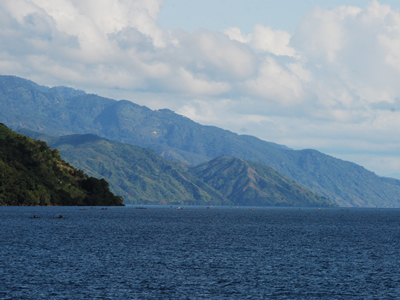 |
| A view of the Malawi coast in Eastern Africa. (Photo by Christopher Scholz) |
Researchers in the College of Arts and Sciences have published new details about the evolution of the East African Rift (EAR) Valley, one of the world’s largest continental rift zones.
Christopher Scholz, professor of Earth sciences, and a team of students and research staff, have spent the past year processing and analyzing data acquired in 1995 and 2001 from Lake Malawi, the result of a multinational research effort sponsored by the National Science Foundation (NSF). By studying the interplay of sedimentation and tectonics, they have confirmed that rifting—the process by which the Earth’s tectonic plates move apart—has occurred slowly in the lake’s central basin over the past 1.3 million years.
The team’s findings are the subject of an article in the Journal of Structural Geology (Elsevier, 2016), which Scholz co-authored with lead author and Ph.D. candidate Tannis McCartney G’17.
Tectonic plates are huge slabs of crust and mantle that are constantly in motion, often crashing into, grinding against or falling beneath one another, causing earthquakes in the process. When this happens, the plates tear apart to form a lowland region known as a rift valley. [...] Syracuse University News







No hay comentarios:
Publicar un comentario